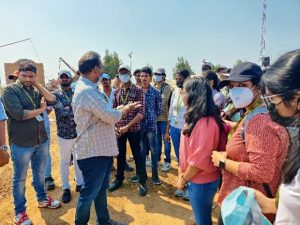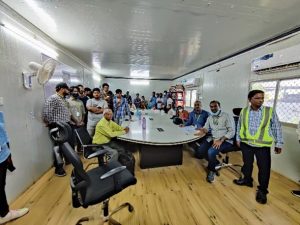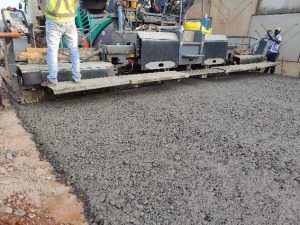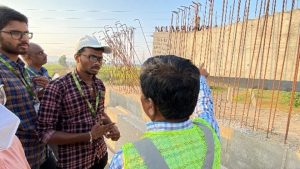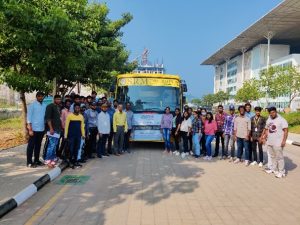- A Critical Analysis of Solid Waste Microplastics January 10, 2023
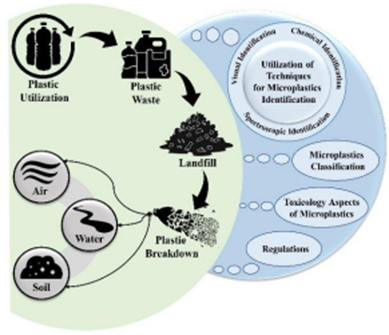
Solid waste is primarily an overlook source of Microplastics that contribute to a delirious amount of pollution to the environment. Thus, a clear understanding of the occurrence and degradation pathways of solid waste microplastics is critical to develop exhaustive control strategies. Dr Deblina Dutta, Assistant Professor, Department of Environmental Science, has published a paper titled, “An insight on sampling, identification, quantification and characteristics of microplastics in solid wastes” in the Q1 journal Trends in Environmental Analytical Chemistry, having an Impact Factor of 13.62.
Abstract of the Research
Microplastics (MPs) have attracted wide attention worldwide as a remarkable pollutant. While MPs spread throughout several complex environmental matrices, various experiments have been preliminarily concentrated on aquatic ecosystems. Terrestrial sources namely solid waste-origin have remained unexplored, although they contribute largely to the origin of aquatic microplastics. Simultaneously, terrestrial systems under human activity, like healthcare units, are likely to be polluted by various plastic ingredients. Solid waste MPs sources primarily include sanitary landfilling, food waste, wastewater treatment end-product (sludge), tire wear, textile washing and paint failure. These microplastics cause adverse impacts on the ecosystem, environment, and health. Accordingly, the present study addressed solid waste MPs’ occurrence and sources, identification, quantification, characterisation, fate, and degradation pathways for developing comprehensive management strategies following the principles of a circular economy.
In particular, this paper critically demonstrated solid waste MPs sources, solid waste MPs sampling followed by identification and quantification by adopting combined chemical (e.g., spectroscopy viz., Fourier transform infrared (FTIR) spectroscopy, and Raman spectroscopy), physical (e.g., microscopies such as transmission or scanning electronic microscopy, TEM or SEM) and thermal analyses. Additionally, the strengths and limitations of each analytical technique are discussed critically with practical aspects. Further, national and international regulations or laws and their subsequent relevance to solid waste MPs management with future challenges are critically discussed. Finally, the outcomes of the review paper will be valuable to different stakeholders for effective policy implementation.
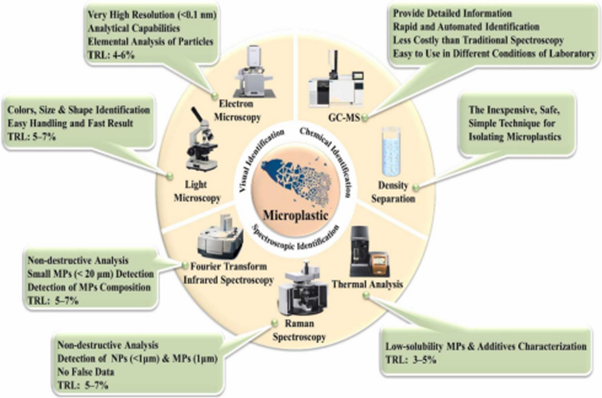
Explanation of the Research in Layperson’s Terms
The published paper deals with microplastics (5 mm to 0.1 μm in size) present ubiquitously in the natural environment including rivers, lakes, estuaries, atmosphere, oceans, soil/sediments, landfilling sites, and wastewater treatment plants. However, microplastics are also present in solid waste and studies related to their identification, characterisation, and quantification are very scarce. Therefore, to know more about microplastics and understand the sources of microplastics in solid waste, the extraction procedures, the identification, characterisation, and quantification techniques, and finally the advantages and disadvantages of each of the processes involved in the identification, characterization, and quantification techniques of microplastics, this study has been carried out.
Practical Implementation/ Social Implications of the Research
Waste-assisted plastic pollution is a major global concern with socio-economic, ecological, and health effects. The present study will make society understand the source of microplastics in solid waste along with its extraction procedures, identification, characterisation, and quantification techniques. If society is aware of the adverse effects of microplastics, then only one can think to protect the environment and human health.
Collaborations
The research has been carried out in collaboration with the University of Burdwan, the University of North Bengal, and CSIR-NEERI, Nagpur.
It is now widely recognised that microplastic pollution poses a serious threat to the environment on a global scale. Having originated from a diverse source, it has persisted in various ecosystems, thereby entering the trophic chain. It has contributed to microplastic pollution in the environment, e-waste being a major source of it. Hence, along with metal recovery from e-waste, regulating microplastic pollution is a growing interest. At this juncture, Dr Dutta’s future research is directed towards resource recovery processes, regulating microplastic pollution, risk assessment, life cycle assessment, and techno-economics analysis.
Continue reading → - IEEE SPS Winter School on Deep Learning for Image Restoration and Computer Vision January 6, 2023
 SRM University-AP hosted the IEEE SPS Winter School on Deep Learning for Image Restoration and Computer Vision from December 5 to 10, 2022. The six-day conference organised by the Department of Electronics and Communication Engineering was inaugurated by the honourable Pro-Vice-Chancellor of SRM University-AP, Prof. D Narayana Rao. Expert talks by renowned academicians from the University of Dayton, USA; University of Bath, UK; IIT Hyderabad; IISc Bangalore; IIIT Hyderabad; DA-IICT etc., were the highlights of the conference.
SRM University-AP hosted the IEEE SPS Winter School on Deep Learning for Image Restoration and Computer Vision from December 5 to 10, 2022. The six-day conference organised by the Department of Electronics and Communication Engineering was inaugurated by the honourable Pro-Vice-Chancellor of SRM University-AP, Prof. D Narayana Rao. Expert talks by renowned academicians from the University of Dayton, USA; University of Bath, UK; IIT Hyderabad; IISc Bangalore; IIIT Hyderabad; DA-IICT etc., were the highlights of the conference.Prof. Sumantra Dutta Roy from IIT Delhi, a well-acclaimed researcher in computer vision and machine learning, joined on the last day of the conference, Saturday, December 10, 2022, for a lecture on Biometrics and Medical Informatics. The discourse focused on the speaker’s struggles to come to terms with concepts which have comparatively little physical significance in terms of mathematical rigour or algorithmic efficiency but have the potential to produce hitherto unseen levels of startling results. The talk concluded with some applications of deep architectures and a few problems in biometrics and medical informatics.
The event was funded by IEEE and guided by the IEEE Guntur subsection and Hyderabad Section. Hands-on sessions were also conducted at the conference. Faculty, researchers, and students from various universities around the map participated in the insightful sessions. The event organisers were Prof. Jiji CV and Assistant Professor Dr Sateeshkrishna Dhuli of the Department of Electronics and Communication Engineering, SRM University-AP.
Continue reading → - Young Researcher Award 2022 January 2, 2023

Dr Tousif Khan, Associate Professor and Head, Department of Electrical and Electronics Engineering has been awarded the “Young Researcher Award 2022” by the STEM Society at the International Conference organised at Himachal Pradesh University, Shimla on December 17, 2022. The basic purpose of the STEM-RS is to bring together Researchers, Academicians, Industrialists and Experts from different parts of the country and the world, to exchange knowledge and breakthrough ideas at a common platform by organising national and international events such as Conferences, Seminars and Workshops that unite the Science, Technology, Engineering and Management for the empowerment of research and development.
Continue reading → - Aadigyan-Indian Immersion Programme for Students of UTP Malaysia December 28, 2022
 SRM University-AP welcomed the students and faculty of the Universiti Teknologi PETRONAS (UTP), Malaysia, to the rich cultural landscape of India through the Aadigyan-Indian Immersion programme 2022. The one-week-long programme conducted by the Directorate of International Relations and Higher Studies was inaugurated by the honourable Vice Chancellor of SRM University-AP, Prof. Manoj K Arora. Aadigyan is a flagship initiative of the university to promote India’s cultural and knowledge traditions.
SRM University-AP welcomed the students and faculty of the Universiti Teknologi PETRONAS (UTP), Malaysia, to the rich cultural landscape of India through the Aadigyan-Indian Immersion programme 2022. The one-week-long programme conducted by the Directorate of International Relations and Higher Studies was inaugurated by the honourable Vice Chancellor of SRM University-AP, Prof. Manoj K Arora. Aadigyan is a flagship initiative of the university to promote India’s cultural and knowledge traditions.Dr Naga Swetha Pasupuleti, Associate Director of the Directorate of International Relations and Higher Studies, received the international students at the grand inaugural ceremony of the programme. Students participated in various short courses on Data Analysis, Samaj Seva, the Art of Negotiation & Digital Marketing offered by the Paari School of Business. They also got to visit the famous landmarks of Vijayawada, such as the Dhyana Buddha statue, Prakasham Barrage, Kondapalli, etc. The traditional toy-making practice enticed the Malaysian student cohort.
Students interacted with many industry experts as they visited Infosys Gachibowli, Hyderabad campus, which gave them insights regarding the current trends and new technologies. The programme also included interaction with the 160+ International students of SRM AP from more than 29 countries over RRR Movie Screening and Gala Night. The programme ended on December 26, 2022, with a valedictory session and facilitating faculty and students of UTP Malaysia.
Continue reading → - Industrial Visit to MEIL December 27, 2022
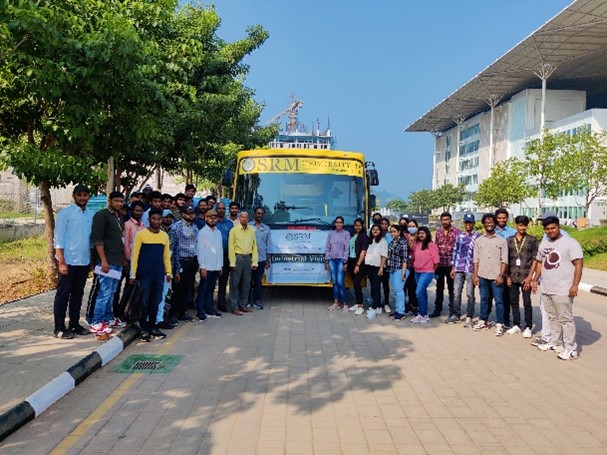
The Department of Civil Engineering has organised an industrial visit to Megha Engineering & Infrastructure Limited (MEIL) for engineering students to harbour them with the practical skillsets demanded by profession. The field visit was guided by senior engineers working on respective sites and co-ordinated by the faculty.
Project: Six-Laning of Vijayawada Bypass from Chinna Autupalli (Design Ch. 0.000) to Gollapudi (Design Ch. 30.000) Section of NH-16
Construction Company: Megha Engineering & Infrastructures Limited (MEIL)
Visit Highlights:
- Safety training by MEIL
- Quality Control Lab tour
- Soil, Aggregate, Bitumen, and Cement Concrete Testing
- Quality Control Aspects
- Batching Plant visit
- WMM and Concrete batching plants
- Site Tour
- Earthworks, Embankment, and WMM Construction
Coordinating faculty: Dr A Uma Maheswar
Continue reading →


